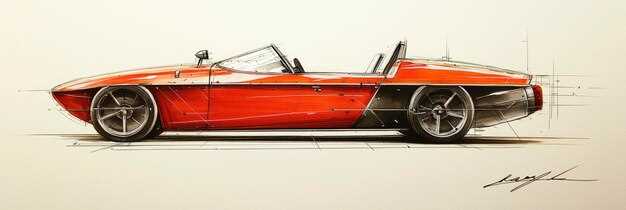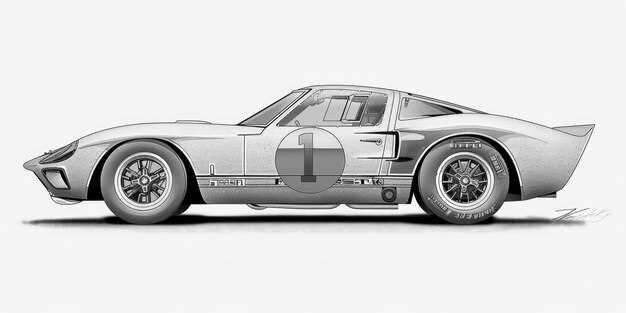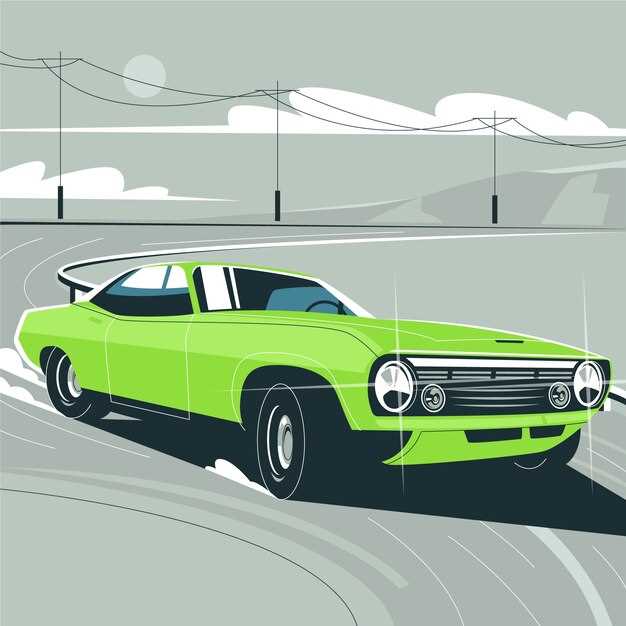
The Chevrolet Corvette is not just an automobile; it is a statement of American engineering and design excellence. Since its inception in the early 1950s, the Corvette has undergone a remarkable transformation, reflecting changes in technology, performance, and aesthetic preferences. Each decade has brought a unique perspective to the design of this iconic sports car, making it a representative of its time while also paving the way for future innovations.
From the sleek and curvaceous lines of the original C1 models to the aggressive and aerodynamic styling of the C8 generation, the evolution of Corvette design encapsulates a rich tapestry of creativity and engineering prowess. Throughout the years, designers have continuously pushed the boundaries, ensuring that each iteration retains the core identity of the Corvette while adapting to the ever-changing automotive landscape.
In this article, we will explore the significant milestones in Corvette design across the decades, highlighting how each era’s unique traits have contributed to the car’s enduring legacy. By examining the innovative features and distinctive elements that define each model, we will gain a deeper understanding of how the Corvette has remained a symbol of performance and style throughout its storied history.
Key Design Influences of the 1950s and 1960s

The 1950s and 1960s represented a significant turning point in automotive design, particularly for the Chevrolet Corvette. This era was marked by a strong influence of post-war optimism and the burgeoning consumer culture. Designers were inspired by the advancements in technology and a desire for speed, which shaped the Corvette’s history as an iconic American sports car.
One of the most notable influences during this period was the prevalence of jet-age aesthetics. The sleek lines and aerodynamic shapes of aircraft provided a blueprint for automotive design. This is clearly seen in the clean, elongated contours of the Corvette, which aimed to convey speed even when stationary. The use of fiberglass in the body construction further reflected innovations in material science, allowing for lighter and more visually striking forms.
The influence of European automobile design also made a significant impact. The early Corvettes integrated elements from European sports cars, such as the use of rounded fenders and a more performance-oriented stance. This cross-pollination enriched the Corvette’s design language, making it more appealing to a growing segment of affluent buyers interested in sportiness and style.
Additionally, the aesthetics of the 1960s embraced bold colors and dynamic graphics, which played a crucial role in the Corvette’s identity. Vibrant paint options and distinctive stripes became synonymous with the models of the era, capturing the essence of American youth culture and the excitement surrounding the growing car culture. This emphasis on personal expression through vehicle design was a response to a rapidly changing society.
The impact of the Corvette on automotive design during the 1950s and 1960s cannot be overstated. Its innovative design choices not only aligned with contemporary trends but also paved the way for future generations of sports cars. The legacy of this period endures, influencing car enthusiasts and designers alike, and ensuring the Corvette remains a symbol of American ingenuity and style.
Technological Advances in Corvette Design During the 1970s and 1980s

The 1970s and 1980s were pivotal decades for the Corvette, marked by significant technological advances that reshaped its design. During the early 1970s, the introduction of new environmental regulations led to a shift in the design philosophy. Engineers focused on integrating emissions control technologies while maintaining the iconic performance characteristics of the Corvette.
In 1973, the transition to a more refined body shell began. The use of reinforced fiberglass became standard, contributing to weight savings and structural integrity. This was complemented by improved aerodynamics, as designers began to emphasize sleek, flowing lines, which not only enhanced aesthetic appeal but also improved fuel efficiency.
The late 1970s saw the debut of the C3 generation’s most notable feature: the introduction of the fastback rear window. This design choice not only updated the Corvette’s silhouette but also improved airflow, further enhancing performance at high speeds. Additionally, the use of digital instrumentation in models such as the 1978 Corvette marked a technological leap, providing drivers with precise information at a glance.
The 1980s brought even more dramatic changes. The C4 generation, launched in 1984, represented a complete overhaul of the Corvette design. This era featured an entirely new chassis and body structure, being lighter and more rigid than its predecessor. The incorporation of state-of-the-art materials, such as advanced composites and aluminum, allowed for enhanced performance and efficiency.
The dashboard was transformed with high-end technology that included digital displays and advanced audio systems, aligning the Corvette with modern automotive trends. The introduction of the first anti-lock braking systems (ABS) in 1986 furthered the vehicle’s reputation for safety and innovation.
In summary, the design evolution of the Corvette during the 1970s and 1980s was characterized by significant technological advancements. These innovations not only improved performance and safety but also ensured that the Corvette remained a symbol of American automotive excellence.
Modern Trends and Future Directions in Corvette Styling
The Corvette has always been an epitome of American sports car design, and modern trends continue to refine its iconic look while pushing boundaries. Contemporary Corvette design embraces aerodynamics and lightweight materials, ensuring high performance without sacrificing aesthetic appeal. The latest models incorporate sleek lines and aggressive stances, accentuating speed and capability.
One prominent trend is the integration of advanced technology into the design. Modern Corvettes feature adaptive lighting systems and digital displays, which enhance both functionality and visual impact. The use of LED technology allows for more dynamic lighting signatures, which further accentuates the Corvette’s modern styling.
Moreover, the trend towards customization is evident in the Corvette’s design evolution. Manufacturer-offered options allow buyers to personalize exterior colors, trims, and even aerodynamic kits, fostering a deeper connection between the car and its owner. This trend reflects a shift towards individual expression within the overarching Corvette aesthetic.
As the automotive industry evolves, so too does the Corvette’s design philosophy. With a growing emphasis on electric vehicles, future iterations may see a departure from traditional combustion engines. This transition will undoubtedly influence Corvette styling, introducing elements representative of electric performance while maintaining the brand’s heritage.
Another significant direction is the emphasis on sustainability in materials and construction. Future Corvettes may utilize recyclable materials and innovative manufacturing techniques, aligning with global trends towards environmental responsibility. This evolution, while mindful of the planet, will challenge designers to balance green technology with the high-performance legacy of the Corvette.
In conclusion, Corvette styling is at a pivotal point, blending traditional elements with modern innovation. As technology advances and consumer preferences shift, the future of Corvette design promises to be exciting, bold, and uniquely reflective of its storied past while paving the way for the future of performance vehicles.



